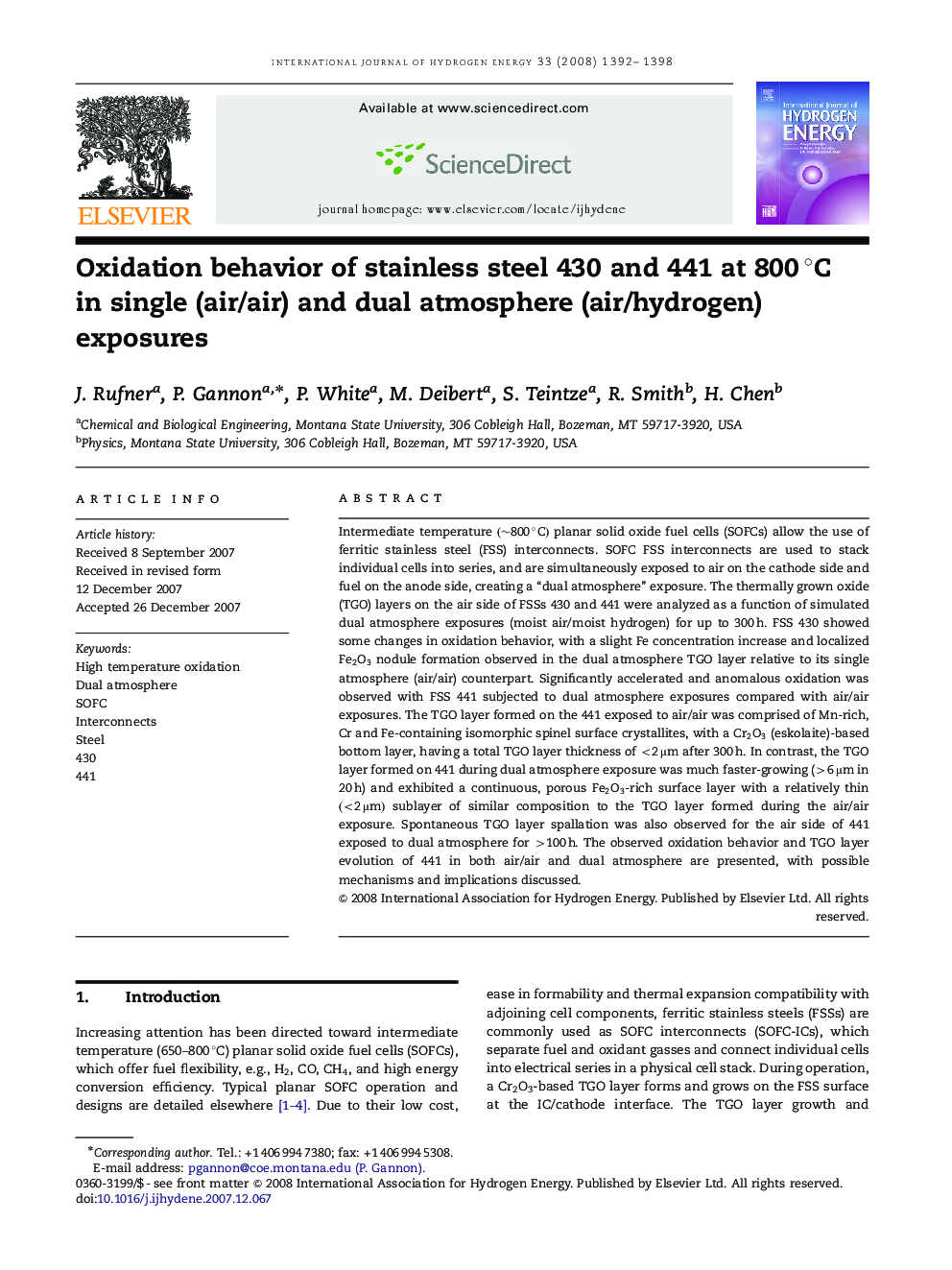| Article ID | Journal | Published Year | Pages | File Type |
|---|---|---|---|---|
| 1274716 | International Journal of Hydrogen Energy | 2008 | 7 Pages |
Intermediate temperature (∼800∘C) planar solid oxide fuel cells (SOFCs) allow the use of ferritic stainless steel (FSS) interconnects. SOFC FSS interconnects are used to stack individual cells into series, and are simultaneously exposed to air on the cathode side and fuel on the anode side, creating a “dual atmosphere” exposure. The thermally grown oxide (TGO) layers on the air side of FSSs 430 and 441 were analyzed as a function of simulated dual atmosphere exposures (moist air/moist hydrogen) for up to 300 h. FSS 430 showed some changes in oxidation behavior, with a slight Fe concentration increase and localized Fe2O3Fe2O3 nodule formation observed in the dual atmosphere TGO layer relative to its single atmosphere (air/air) counterpart. Significantly accelerated and anomalous oxidation was observed with FSS 441 subjected to dual atmosphere exposures compared with air/air exposures. The TGO layer formed on the 441 exposed to air/air was comprised of Mn-rich, Cr and Fe-containing isomorphic spinel surface crystallites, with a Cr2O3Cr2O3 (eskolaite)-based bottom layer, having a total TGO layer thickness of <2μm after 300 h. In contrast, the TGO layer formed on 441 during dual atmosphere exposure was much faster-growing (>6μm in 20 h) and exhibited a continuous, porous Fe2O3Fe2O3-rich surface layer with a relatively thin (<2μm) sublayer of similar composition to the TGO layer formed during the air/air exposure. Spontaneous TGO layer spallation was also observed for the air side of 441 exposed to dual atmosphere for >100h. The observed oxidation behavior and TGO layer evolution of 441 in both air/air and dual atmosphere are presented, with possible mechanisms and implications discussed.
